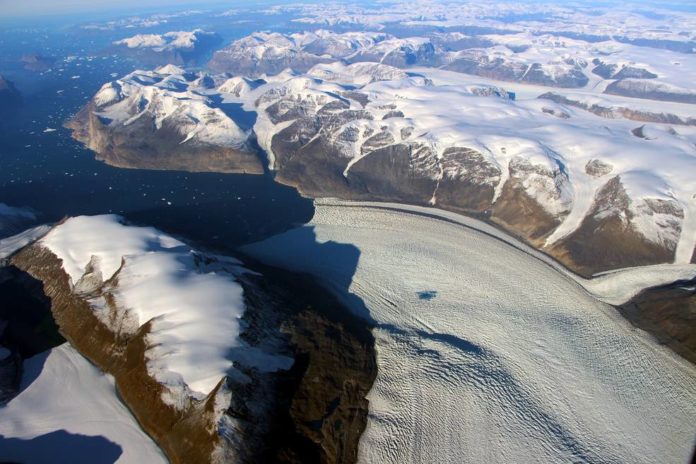New study by three scientists from NASA finds yet another cause of glacier meltdown. The finding suggests that the ice in Rink Glacier, Greenland, didn’t just melt faster than usual, it slid through the glacier’s interior in a gigantic wave. This is similar to a warmed freezer pop sliding out of its plastic casing.
The study’s initial aim, to precisely track a glacier’s loss of mass from melting ice using the horizontal motion of a GPS sensor, led to this discovery. The team used data from a single sensor in the Greenland GPS Network (GNET), sited on bedrock next to Rink Glacier.
The researchers saw the wave pattern in the GPS data for 2010, the second hottest summer on record in Greenland. Although they did not quantify the exact size and speed of the 2010 wave, the patterns of motion in the GPS data indicate that it must have been smaller than the 2012 wave but similar in speed.

Credits: NASA
The scientists theorize that previously known processes combined to make the mass move so quickly. The huge volume of water lubricated the base of the glacier, allowing it to move more rapidly, and softened the side margins where the flowing glacier meets rock or stationary ice. These changes allowed the ice to slide downstream so fast that ice farther inland couldn’t keep up.
“We know for sure that the triggering mechanism was the surface melting of snow and ice, but we do not fully understand the complex array of processes that generate solitary waves,” said JPL scientist Surendra Adhikari, who led the study.

According to the space agency, the wave could not have been detected by the usual methods. The usual method includes measuring the thinning of glaciers with airborne radar.

























